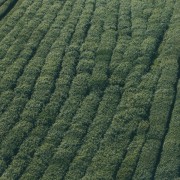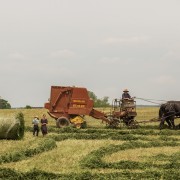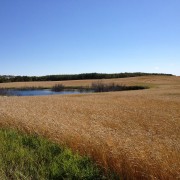Compiling Your Financial Information
The proverbial shoe-box, or an organized file package.
Maybe a shoe-box that supports accounting software.
Maybe it’s a fully completed accounting software package that includes all depreciation expensed and dividends paid.
For those of us on a December 31 year-end, the calendar has turned and the clock is ticking. If you haven’t had a planning meeting with your accountant prior to now, it’s likely too late to act on some of the options you had.
When are you able to get your information in to your accountant? My mentor threw down the gauntlet last year when he showed me that his accountant had his financial statements prepared a mere 28 days after his fiscal year end. That’s some WOW factor there! For my file, I’m shooting for thirty-five days or less; target: early/mid-February.
For me to help my accountant meet my goal of a 35 day turnaround, I need to provide him with accurate information as fast as possible. I need to provide clear information on income and expenses (not a shoebox full of invoices and receipts.) I need to provide a detailed report on changes in my fixed assets over the year, my accounts receivable at year end, etc. The better the quality of info I provide to him, the faster he can get my file off his “To Do” pile and onto the “Done” pile.
It is a typical comment made every year: we have to wait for the bank, and other creditors, statements before the final month report can be ready to send to the accountant. I’m not waiting. I’m logging into my online banking and retrieving transaction info right away. The details are there, so why let this time go to waste?
When getting your taxes and reporting completed as quick as possible, the benefits are many:
- You will get ahead of your accountant’s busiest time, which makes him/her happy!
- You will get your bank annual review done earlier and on time, which makes them happy!
- You will receive your financial reporting earlier allowing you to fully analyze last year’s results and make improved decisions for this year accordingly.
- You will be equipped to seek new credit before seeding, if required.
The government has filing deadlines for taxes, the bank has reporting deadlines for your annual review. To receive your December 31 financial statements in August because it took you so long to get your info in to your accountant provides you, and your financial partners, little use. The information in those reports is too old because so much has changed on your farm since the date on the statements. Would you write a cheque in August based on the balance you see in your December bank statement?
Direct Questions
What systems and processes do you have in place to compile your business and financial information as quickly and accurately as possible?
How are you using your financial information to make business decisions?
Have you discussed with your accountant as to how he/she prefers to receive information from you? Making their jobs easier will get you higher quality reports much faster.
From the Home Quarter
Getting your year-end completed quickly will help you be more profitable. When your statements are early (or at least on time,) you create opportunity with your creditors. Opportunity with your creditors creates strategies for growth (and possible lower borrowing costs.) Strategies for growth create opportunities to expand, increase efficiency, control expenses, etc…all which lead to greater profitability.
And it is all starts with getting your information compiled and delivered to your accountant fast and on time.










